News

NASA Plans Another Busy Year for Earth Science Fieldwork
NASA scientists are crisscrossing the globe in 2017 – from a Hawaiian volcano to Colorado mountain tops and west Pacific islands – to investigate critical scientific questions about how our planet is changing and what impacts humans are having on it.

Navigating the Next Generation
Walter Klein travels all over the world as a navigator for NASA’s DC-8 airborne laboratory. On top of all of his responsibilities as DC-8 navigator, Klein has a deep commitment to sharing the excitement of NASA Airborne Science Program missions with students, teachers and the public.

NASA ER-2 Prepares to Support NOAA GOES-R Satellite
Over the next six months, NASA will be working with NOAA to calibrate sensors and validate data transmitted down from the Geostationary Operational Environmental Satellite (GOES-R) using NASA’s ER-2 high-altitude aircraft.

NASA Nears Finish Line of Annual Study of Changing Antarctic Ice
Operation IceBridge, NASA’s airborne survey of changes in polar ice, is closing in on the end of its eighth consecutive Antarctic deployment, and will likely tie its 2012 campaign record for the most research flights carried out during a single Antarctic season.

Getting to Know the Getz Ice Shelf
IceBridge, now in its eighth year, continues to build a record of how ice is responding to changes in the polar environment. The Getz Ice Shelf in West Antarctica is one area that scientists try to examine each year.

Studies Offer New Glimpse of Melting Under Antarctic Glaciers
Two new studies by researchers at NASA and the University of California, Irvine (UCI), detect the fastest ongoing rates of glacier retreat ever observed in West Antarctica and offer an unprecedented direct view of intense ice melting from the floating undersides of glaciers. The results highlight how the interaction between ocean conditions and the bedrock beneath a glacier can influence the glacier's evolution, with implications for understanding future ice loss from Antarctica and global sea level rise.

NASA Launches Eighth Year of Antarctic Ice Change Airborne Survey
IceBridge completed the first research flight of its 2016 Antarctic campaign on October 14. The campaign will continue through November 19. This year, the mission is based in Punta Arenas, a city at the southern tip of Chile. From there, IceBridge is carrying 12-hour flights back and forth to Antarctica, covering most of the western section of the frozen continent – the region that is experiencing the fastest changes and is Antarctica’s biggest contributor to sea level rise.

NASA/NOAA Team Deploy Global Hawk to Track Hurricane Matthew
NASA’s Global Hawk aircraft was deployed to Florida from Armstrong Flight Research Center at Edwards, CA. on Oct. 6 to monitor and take scientific measurements of Hurricane Matthew. The unmanned Global Hawk will gather scientific data in support of NOAA’s Sensing Hazards with Operational Unmanned Technology (SHOUT) mission.

NASA Using Aircraft to Measure Mid-Atlantic Greenhouse Gases
NASA is conducting low-level aircraft flights measuring greenhouse gases over the mid-Atlantic region through September. The flights are for the CARbon Airborne Flux Experiment or CARAFE, which will measure the exchange of greenhouse gases such as carbon dioxide and methane between the Earth and the atmosphere in the region. In addition, water vapor, temperature, and vertical wind measurements will be taken.
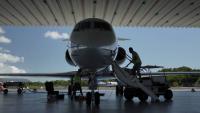
NASA Begins Study of Australia's Great Barrier Reef
A NASA airborne mission designed to transform our understanding of Earth's valuable and ecologically sensitive coral reefs has set up shop in Australia for a two-month investigation of the Great Barrier Reef, the world's largest reef ecosystem.

Science Flights Study Effect of Summer Melt on Greenland Ice Sheet
Operation IceBridge, NASA’s airborne survey of polar ice, is flying in Greenland for the second time this year, to observe the impact of the summer melt season on the ice sheet. The IceBridge flights, which began on Aug. 27 and will continue until Sept. 16, are mostly repeats of lines that the team flew in early May, so that scientists can observe changes in ice elevation between the spring and late summer.

NASA Global Hawk alerts NOAA of Gaston’s intensification
NOAA’s National Weather Service National Hurricane Center used real-time weather data from the NASA Global Hawk unmanned aircraft to upgrade a tropical storm to a hurricane in the early morning hours Thursday.

NASA Flies to Africa to Study Climate Effects of Smoke on Clouds
NASA scientists and two research aircraft are on their way to a unique natural laboratory off the Atlantic coast of southwest Africa to study a major unknown in future climate prediction.

NASA Study Analyzes Four Corners Methane Sources
In an extensive airborne survey, a NASA-led team has analyzed a previously identified "hot spot" of methane emissions in the Four Corners region of the United States, quantifying both its overall magnitude and the magnitudes of its sources. The study finds that just 10 percent of the individual methane sources are contributing half of the emissions.

NASA Science Flights Target Melting Arctic Sea Ice
This summer, with sea ice across the Arctic Ocean shrinking to below-average levels, a NASA airborne survey of polar ice just completed its first flights. Its target: aquamarine pools of melt water on the ice surface that may be accelerating the overall sea ice retreat

NASA's Airborne Mission to Explore the Global Atmosphere
The Atmospheric Tomography, or ATom, mission is the first to survey the atmosphere over the oceans. Scientists aboard NASA's DC-8 flying laboratory will journey from the North Pole south over the Pacific Ocean to New Zealand and then across to the tip of South America and north up the Atlantic Ocean to Greenland. ATom will discover how much pollution survives to the most remote corners of the earth and assess how the environment has changed as a result.
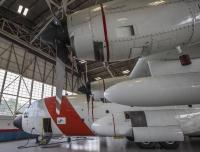
NASA Flights to Track Greenhouse Gases Across Eastern US
Atmospheric Carbon and Transport–America, or ACT-America, is a multi-year airborne campaign that will measure concentrations of carbon dioxide and methane in relation to weather systems. The study will gather real-time measurements from research aircraft and ground stations to improve the ability to detect and quantify the surface sources and sinks of the gases.
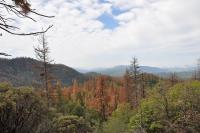
NASA Maps California Drought Effects on Sierra Trees
A new map created with measurements from an airborne instrument developed by NASA’s Jet Propulsion Laboratory, Pasadena, California, reveals the devastating effect of California’s ongoing drought on Sierra Nevada conifer forests.

Students to Study Air Quality
Starting this week, 32 undergraduate students begin an eight-week NASA airborne science field experience designed to immerse them in the agency's Earth science research.

Earth Expeditions: Josh Willis OMG Mission Update
On Friday June 3, 2016, the Oceans Melting Greenland mission had its first successful test of the system for dropping ocean probes from the Gulfstream-III aircraft into the ocean. The team dropped a single probe into the Gulf of Mexico about 100 miles offshore of Houston as a T-38 chase aircraft monitored. Learn more about OMG and #EarthExpeditions: http://www.nasa.gov/earthexpeditions

NASA’s Operation IceBridge Completes 2016 Arctic Spring Campaign
Operation IceBridge, NASA’s airborne survey of polar ice, ended its eighth spring Arctic campaign on May 21. During their five weeks of operations, mission scientists carried out six research flights over sea ice and ten over land ice.
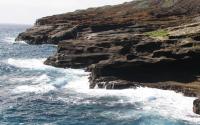
New NASA Instrument Brings Coasts and Coral into Focus
NASA's upcoming Coral Reef Airborne Laboratory (CORAL) field experiment will observe entire reef ecosystems in more of the world's reef area – hundreds of times more -- than has ever been observed before.

New Study Maps Rate of New Orleans Sinking
New Orleans and surrounding areas continue to sink at highly variable rates due to a combination of natural geologic and human-induced processes, finds a new NASA/university study using NASA airborne radar.

All in the NAAMES of Ocean Ecosystems and Climate
NAAMES, or the North Atlantic Aerosols and Marine Ecosystems Study, is a five-year NASA-funded study that aims to better define the relationship between the ocean and the atmosphere. NAAMES is the first NASA Earth Venture-Suborbital mission focused on studying the coupled ocean ecosystem and atmosphere using ships and aircraft simultaneously.

Airborne Expedition Tackles Global Air Quality Problem
Next week NASA and the Republic of Korea’s National Institute of Environmental Research (NIER) embark on the collaborative Korea United States Air Quality study (KORUS-AQ). The KORUS-AQ field campaign will combine observations from aircraft, satellites, ships and ground stations with air quality models to assess and monitor air quality across urban, rural and coastal areas.

IceBridge Begins Eighth Year of Arctic Flights
Operation IceBridge, NASA’s airborne survey of polar ice, completed its first Greenland research flight of 2016 on April 19, kicking off its eighth spring Arctic campaign. This year’s science flights over Arctic sea and land ice will continue until May 21.

Airborne Mission Looks at Fires and Cooling Atlantic Cloud Decks
A new NASA airborne field experiment planned for this summer will make key airborne measurements of clouds and smoke particles over the southeastern Atlantic Ocean to help scientists understand a major challenge to our understanding of climate science.
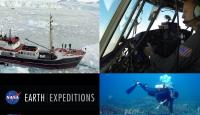
NASA Gets Down to Earth This Year With Globe-Spanning Expeditions
NASA is sending scientists around the world in 2016 – from the edge of the Greenland ice sheet to the coral reefs of the South Pacific – to delve into challenging questions about how our planet is changing and what impacts humans are having on it.

Airborne Study Surveys Greenhouse Gases in World Tour
The first deployment of one of NASA's most ambitious research studies of Earth's atmosphere will take place this July and August. The Atmospheric Tomography mission will take off aboard the agency's DC-8 flying laboratory on a 26-day journey from the North Pole down the Pacific Ocean to New Zealand and then across to the tip of South America and back north up the Atlantic Ocean to the Arctic.
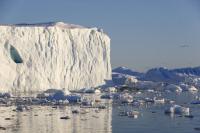
Q&A with Oceans Melting Greenland scientist Josh Willis
The new NASA airborne mission Oceans Melting Greenland (OMG) will pave the way for improved estimates of sea level rise by addressing the question: To what extent is the ocean melting Greenland’s ice from below? The mission will observe changing water temperatures and glaciers that reach the ocean around Greenland from 2015 to 2020. The OMG data set will complement earlier and ongoing observations of Greenland's melting ice sheet by satellite sensors such as the Gravity Recovery and Climate Experiment (GRACE), which gives a precise measurement of the loss of mass from Greenland, and other airborne programs including NASA's Operation IceBridge, which measures bedrock topography and the depth of the overlying snow and ice.
